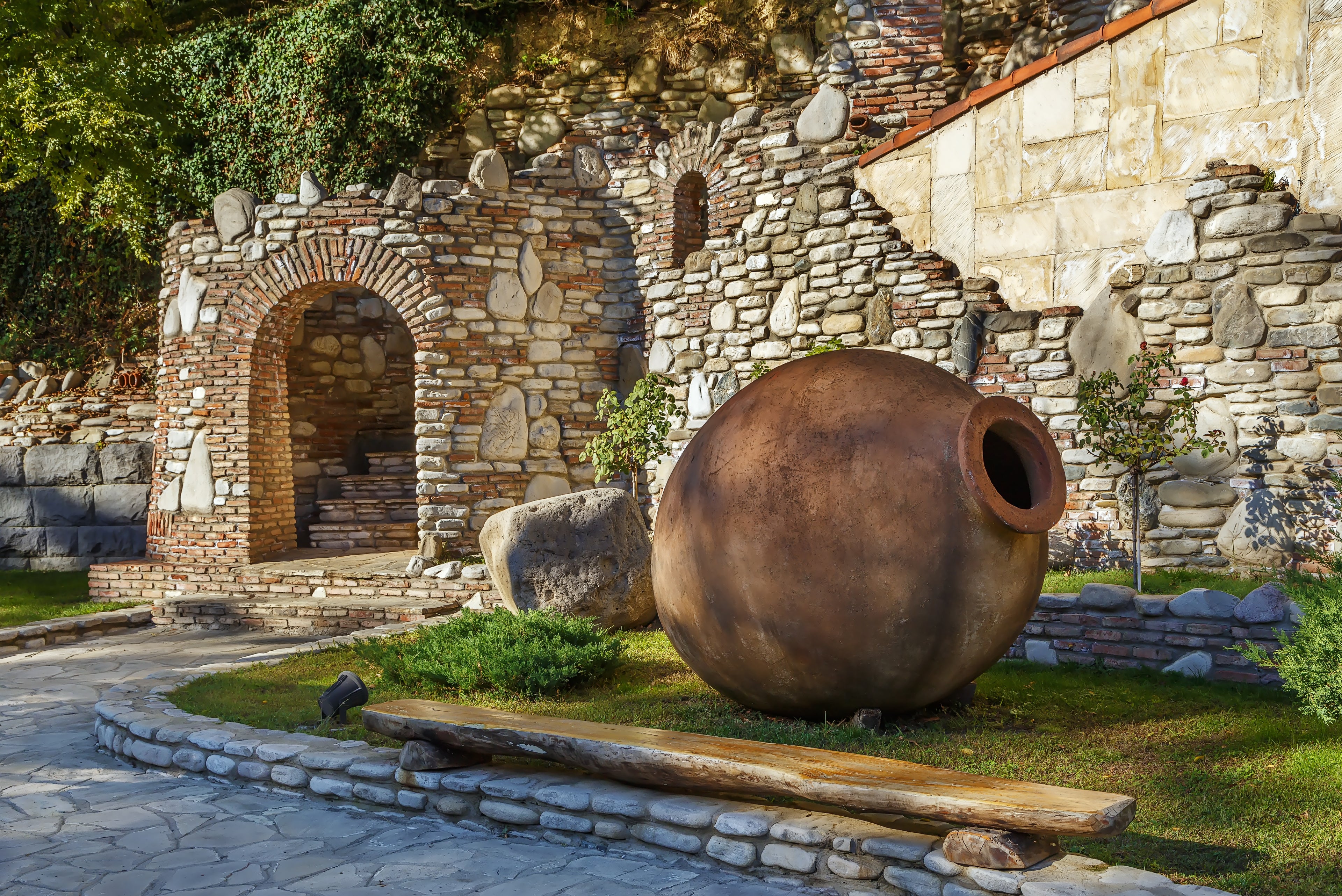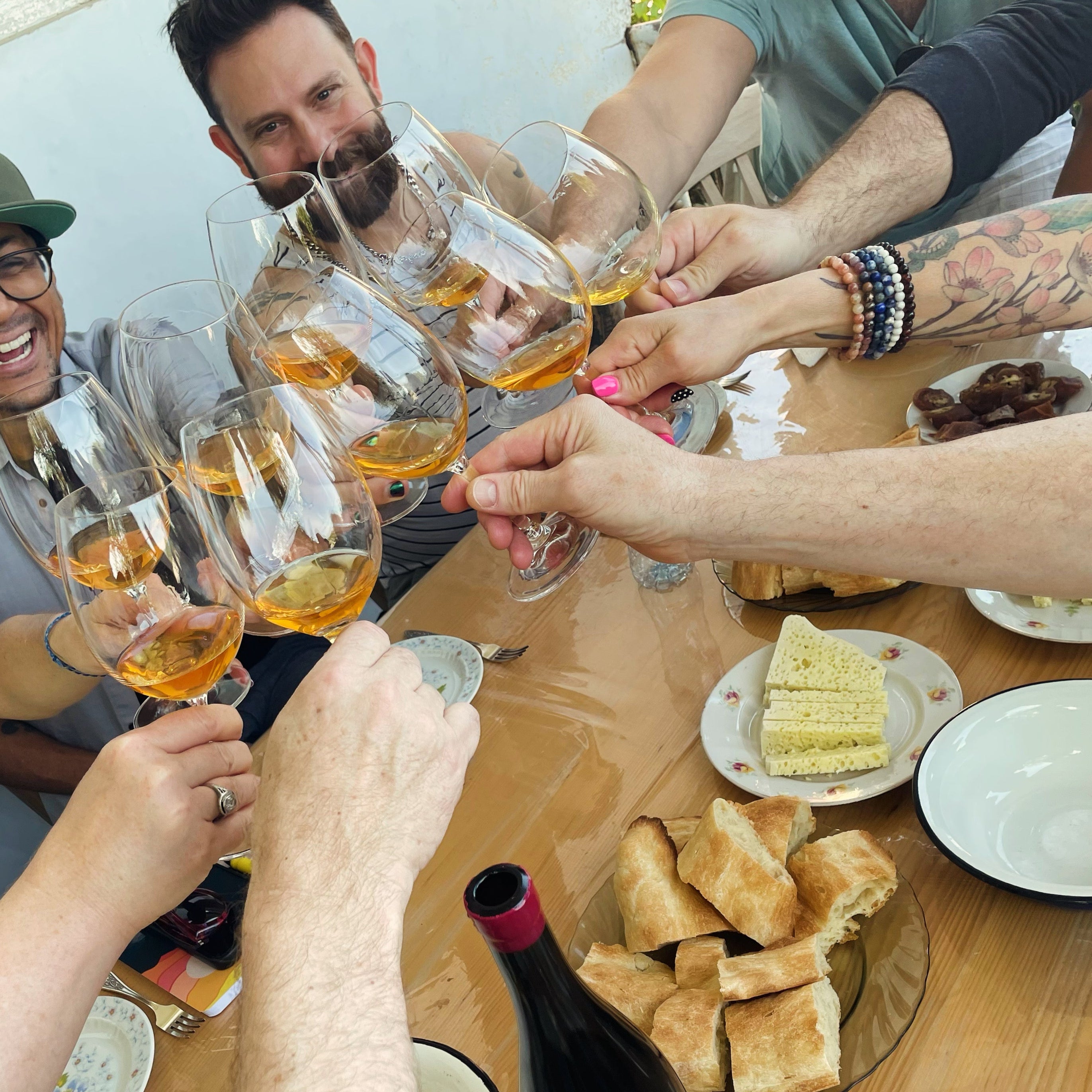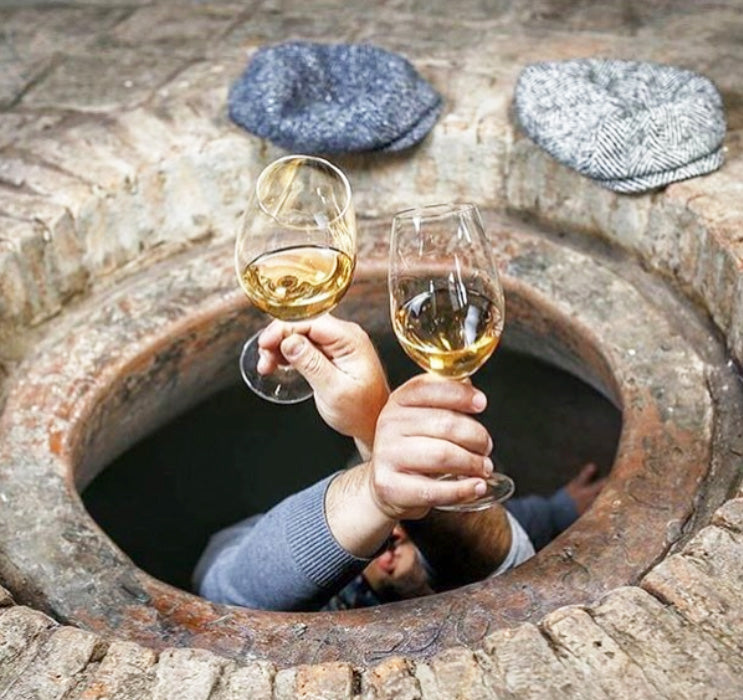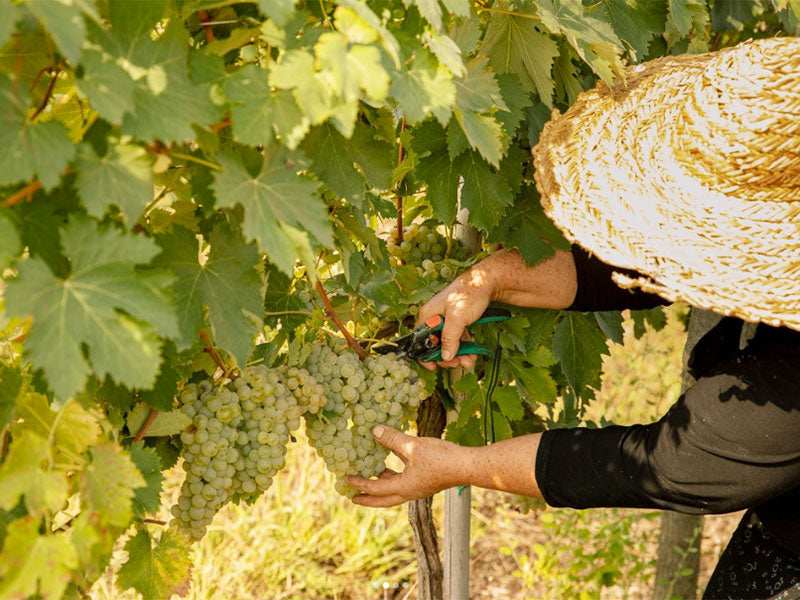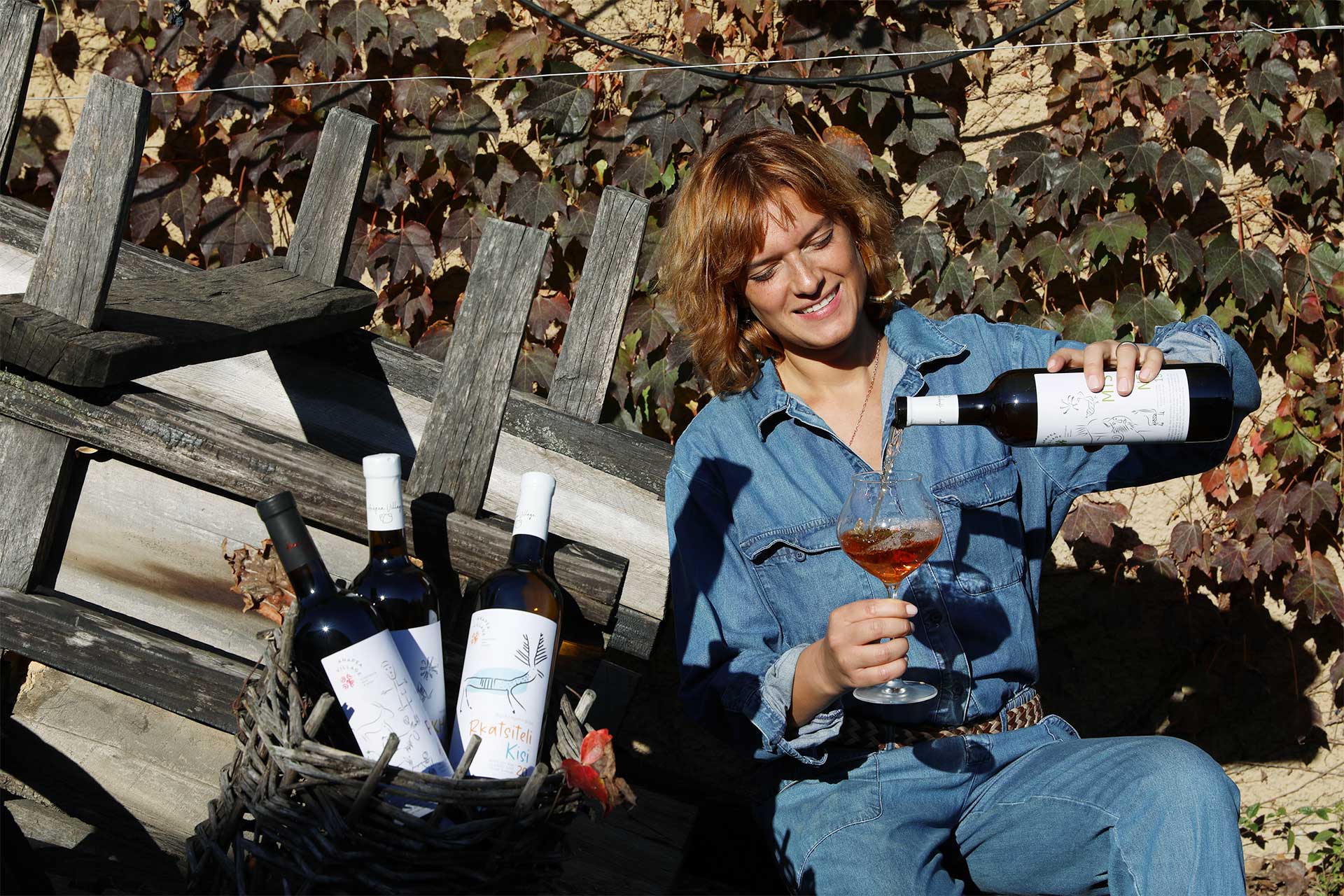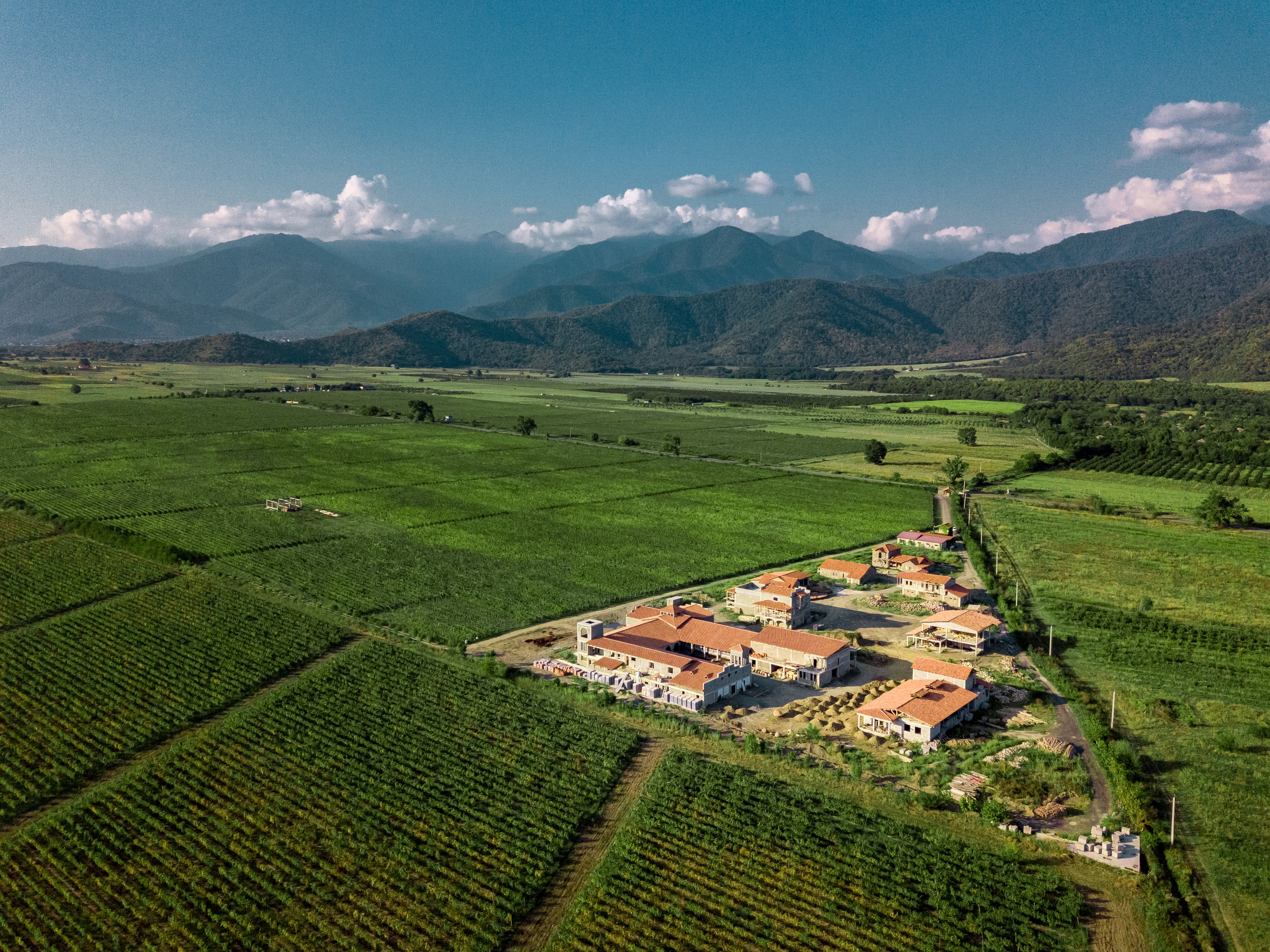The country of Georgia is considered the ancient cradle of winemaking civilization, with the earliest evidence of intentional winemaking dating back over 8,000 years(!) in this specific place.
WHERE:
To many, Georgia can feel incredibly foreign and far away, sitting as it does at the crossroads of Europe and Asia: It’s sandwiched between Russia to its north, Turkey and Armenia to its south, and Azerbaijan in the southeast. The Black Sea makes up its balmy western border, while the Greater Caucasus Range hems Georgia’s alpine north. But a visit to this beautiful country (even if only through the glass!) quickly shows wine drinkers, foodies, art lovers and adventurers that this special place is—figuratively, at least—much closer to home, to our shared values, to our collective passions than we may have thought.
WHAT:
Here, in winegrowing regions like Kakheti, Kartli, Imereti, Racha, Meskheti, and the Black Sea Coastal Zone, families continue to farm native grape varieties like Saperavi, Kisi and Rkatsiteli originally planted by their forefathers even millennia ago. They craft honest, authentic, singular and soulful wines the same way generations before them did—in terracotta amphora known as qvevri nestled into stone cellars—as well as in new and novel styles that showcase the curiosity and innovation inherent to the Georgian people.
WHY:
But the most immediately noticeable quality of Georgia’s gorgeous wines? It’s the signature, unparalleled hospitality of Georgia that comes through in every bottle, the love for community they constantly celebrate, and the toast to victories great and small that every glass of Georgian wine offers.
And so, as they say “cheers” in Georgia:
Gaumarjos!
(but literally: it translates to “victory to you!”)
Winemaking Values & Approach
Modern winemaking in Georgia is both innovative and traditionalist, as much forward-thinking as it is deeply rooted in history and ritual. Our winemakers embrace ancient winemaking techniques while also experimenting with new-school styles, welcoming the whole spectrum of drinkers — whether you’re seeking something nostalgic, or familiar, or completely avant-garde, Georgian wine is for you.
Amber (Orange) Wines
Many drinkers’ first experience with Georgian wine is in the form of amber wine (also known as “orange” wine or “skin-contact” white wine). White grapes like Georgia’s popular native Kisi or Rkatsiteli are crushed, and the clear juice is left to macerate and ferment in contact with the grapes’ golden skins, slowly bleeding pigment to contribute that signature amber hue to the finished wine. Not only is the wine orange in color, but thanks to the tannins leached from the grape skins, it’s also more structured, with a gentle grip and slight astringency… making amber wines ideal for pairing with rich or complex foods.
While amber wines may seem like an uber-modern trend, in Georgia, they’ve been made for millenia. Think of them as the OGs—the “original oranges.” This style was typical in Georgia because, historically, ancient winemakers didn’t have the tools, technology or advanced understanding of fermentation science to separate grape skins from juice prior to fermentation. Instead, they simply tossed entire clusters of just-picked grapes into their qvevri… and then let God/the universe/magic do its trick, eventually turning out a tantalizing (and intoxicating!) golden liquid.
Qvevri
Qvevri are also known in Georgia as kvevri or ch’uri. Yes, we’re talking about those giant, egg-shaped clay or terracotta pots that get buried underground and which winemakers use to make, store and age their wine. Traditionally, whole clusters of grapes (skins, seeds, stems and all!) get added into qvevri, where native yeasts carry out fermentation. The egg-shape of the qvevri creates a natural convection, gently circulating the fermenting wine; when the yeast have converted all the grape sugar into alcohol, fermentation stops, and the grape seeds, skins, and spent yeast cells settle to the bottom of the qvevri, making it possible to siphon the naturally clean, finished wine off the top for pure, unfiltered enjoyment.
Georgian Grape Varieties
Georgia boasts over 500 native grape varieties, with names—and tastes—as beautiful and exotic as their swirling script alphabet. While that can make learning these varieties intimidating, fear not: like Georgia’s congenial landscape, food, and people, these wines are easygoing and easy to fall in love with. Here are the top six Georgian grapes you’re most likely to encounter, and which we highly encourage you to try:
- Aleksandrouli (red) - Say: “ah-lek-sahn-DROO-lee” / Made into both dry and semi-sweet styles, Aleksandrouli is soft, low in tannins, rich and plush, with a deep ruby color and bright aromas of raspberry and cherry.
- Goruli Mtsvane - Say: “go-ROO-lee mih-ts-VAH-nay” / Hailing from the Kartli region, Goruli Mtsvane is fresh, bright and fruity with notes of citrus and wildflowers.
- Khikhvi (white) - Say: “HEE-kh-wee” / Low crop yields yet high sugar accumulation make Khikhvi wines (in both dry and dessert styles) ripe, perfumed and floral with moderate acidity.
- Kisi (white) - Say: “KEE-see” / An early-ripening variety, Kisi has pronounced acidity and juicy-spicy notes of ripe citrus, orchard and stone fruit, marigold, walnut and tobacco.
- Mtsvane (white) - Say: “mih-ts-VAH-nay” / Also known as Mtsvane Kakhuri (and not to be confused with Goruli Mtsvane!), this high-quality variety has intense citrus, stone fruit and tropical notes and a full yet fresh character.
- Rkatsiteli (white) - Say: “r-kat-sih-TELL-ee” / The most widely planted variety in Georgia, Rkatsiteli is full yet acidic with dense and crisp orchard and stone fruit notes.
- Saperavi (red) - Say: “sah-peh-RAH-vee” / A unique teinturier (red skin and red flesh), Saperavi has an intensely deep, brooding purple color, powerful yet fine-grained tannins, and bold flavors of dark fruits, cocoa, earth and tobacco.
Wine Regions of Georgia
Long under the yoke of Imperial Russia and the former USSR, Georgia is now a fiercely independent democratic nation facing strongly to the West with formal European Union association and NATO partnerships. Given its E.U. membership, Georgia’s ten broad wine-growing regions are further delineated into 24 E.U.-standardized “protected designations of origin” or PDOs, which mandate the place, authorized grape varieties, production specifications and stylistic characteristics permitted in each.
As in other top-quality winegrowing regions around the world, thoughtful Georgian producers are simultaneously advocating for the essential preservation of traditional regional styles and techniques while also mindfully exploring new varieties and approaches as they further develop their understanding of their home region’s unique terroir nuances.
Eastern Georgia
Wine region: Kakheti, including 17 more specific PDOs for all styles including dry to sweet whites, amber, red, and semi-sweet red. By far, Kakheti is the region best known for its traditional, qvevri-fermented amber wines. Eastern Georgia is characterized by its continental climate with cool nights and temperate days with moderate rainfall, promoting a long and even growing season.
Central Georgia
Wine regions: Kartli (including two more specific PDOs) and Meskheti. Central Georgia has a continental climate leaning towards cooler temperatures, which preserves acidity in the wines.
Western Georgia
Wine regions: Racha (1 PDO), Samegrelo (1 PDO), Imereti (1 PDO), Lechkumi (1 PDO), Abkhazia, Guria and Adjara. Western Georgia is made up of more fertile plains and experiences year-long rainfall and an overall more humid, subtropical climate influenced by the Black Sea.
Wineries & Makers
These are the changemakers. The innovators and instigators. The trailblazers and visionaries who are culling their deep-rooted love for Georgian history, culture and tradition and infusing it with a passion for an even more captivating, equitable and sustainable future of Georgian wine.
We have a strict and exacting process when selecting the wineries we work with. Our producers are masters at conscientious vineyard management, natural yet clean winemaking, and genuine hospitality. They also treat their employees well and pay them fairly. They strive to decrease their carbon footprints and to increase the overall resiliency of our wine industry. They’re respected by their peers as being the makers who are changing the way the world views Georgian wines. We can’t wait for you to meet them.
Learn More
Get in touch
-
Customer service
support@ghvinos.com -
Follow us


